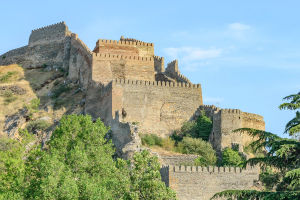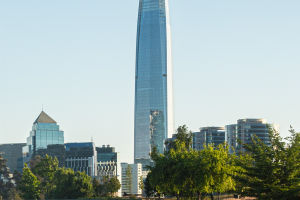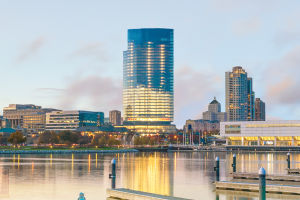Bow River, located in Alberta, Canada, is not just a river, but a key natural attraction flowing through some of the most scenic landscapes in the country. Whether you're an adventure seeker or someone looking to relax amidst breathtaking views, Bow River offers everything.
Let’s explore the essential details you need to make the most of your visit—covering entry fees, timings, activities, transport, and handy travel tips.
The Route of Bow River
The journey of Bow River begins at Bow Glacier and Bow Lake in the Canadian Rockies. It flows southward to Lake Louise, then continues eastward passing through towns like Banff and Canmore. It eventually reaches Calgary before merging with the Elbow River, and finally flows into the South Saskatchewan River. With a total length of 587 km and a watershed area of 26,200 km², Bow River is a major watercourse in the region, enriching both nature and local communities.
Best Time to Visit Bow River
The ideal time to visit Bow River largely depends on the type of activities you prefer.
Summer (June to September): This is the best time for outdoor activities like kayaking, fishing, and hiking. The weather is generally pleasant, with temperatures ranging from 15°C to 25°C (59°F to 77°F). The river is perfect for water activities during this period.
Winter (November to February): If you love winter sports like skiing or snowboarding, winter brings a snowy wonderland to Banff and Canmore. Temperatures drop well below 0°C (32°F), and the towns along the river become ideal for those looking for winter adventures.
Fall (October to November): The autumn months offer fewer crowds and a chance to see the vibrant fall foliage along the river. While some services might be closed, the scenic beauty is still worth visiting.
Ticket Prices & Entry Fees
While Bow River itself is free to access, there are some attractions along the river that charge fees:
Banff National Park: As a major highlight of the Bow River route, Banff National Park requires an entrance fee. Prices are:
Daily Pass: $7.50 per adult
Family Pass: $15 for a family of up to 7 people
Annual Pass: $53 for unlimited access to the park for a year.
Lake Louise: There is no entrance fee to the lake, but parking can be quite expensive. Parking fees can range from $7.50 to $18 per day, depending on the season and availability.
Transport & Getting Around
Getting around Bow River and the towns along its route is fairly easy, but here are some options to consider:
By Car: Renting a car is the most convenient way to explore Bow River and the surrounding towns. From Calgary, the drive to Banff is about 1.5 hours (130 km / 81 miles). Once in Banff, you can use the Bow Valley Parkway to explore scenic spots along the river.
Tip: Book your car rental in advance, especially during peak seasons, as cars can be in high demand.
Public Transport: There are buses available from Calgary to Banff, operated by companies like Brewster Express and Gray Line. Prices for a one-way ticket range from $45 to $60.
Shuttles: If you're staying in Banff or Lake Louise, consider using shuttle services provided by the resort or local operators to get to popular spots along Bow River.
Activities Along Bow River
Bow River offers a range of activities for visitors to enjoy, regardless of age or fitness level:
Hiking: There are numerous trails along the Bow River, from easy walks to challenging mountain hikes. Notable trails include the Bow River Trail (a flat, easy walk with scenic views) and Johnston Canyon (a more challenging hike with waterfalls and stunning views).
Fishing: Bow River is renowned for fly fishing. You can fish for species like trout, but make sure to purchase a fishing permit.
Fishing Permit: Prices for a daily fishing permit range from $11 to $22, depending on the area and time of year.
Water Sports: Kayaking and rafting are popular activities, especially between late spring and early autumn when the river's flow is stable. Companies in Banff and Canmore offer guided rafting tours, with prices ranging from $75 to $115 per person for a half-day trip.
Cycling: Rent a bike and enjoy cycling along the Bow River Pathway. This is a great way to see the area and enjoy the fresh air.
Wildlife Watching: Keep your eyes open for wildlife, including elk, deer, and even bears. Early morning or late evening are the best times for sightings.
Practical Tips for Visiting Bow River
Accommodation: From budget-friendly motels to luxurious resorts, there are many options along the Bow River route. In Banff, expect prices to range from $90 per night for a budget hotel to over $375 per night for luxury resorts. Booking early, especially during peak seasons, is highly recommended.
Packing Tips: The weather in the mountains can be unpredictable. Even in summer, temperatures can drop significantly in the evening. Be sure to pack layers, including a waterproof jacket, and sturdy footwear for hiking.
Stay Hydrated & Protect from Sun: The mountain air can be dry, and the sun can be strong even in cooler months. Carry water with you and apply sunscreen regularly.
Respect Wildlife: Always keep a safe distance from wildlife and never approach animals. Store food securely to avoid attracting animals to your campsite or hotel room.
A Journey of Natural Wonders
Bow River is a treasure trove of natural beauty, offering everything from thrilling outdoor adventures to peaceful moments by the water. Whether you're exploring Banff National Park, hiking along the Bow River Trail, or fishing in the crystal-clear waters, this destination is truly a gem. We hope this guide helps you plan your perfect trip to Bow River. Happy travels, and we hope to hear about your experiences!


